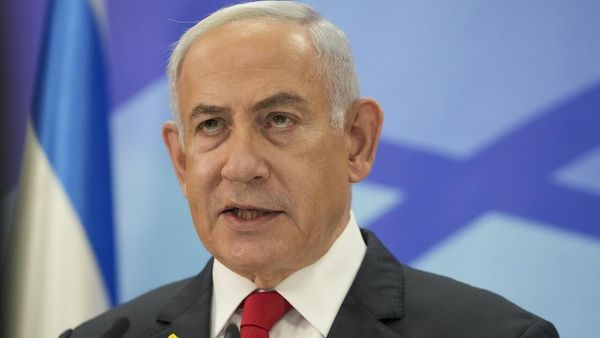For all their tendency to boom and bust, financial markets are usually adept at second-guessing governments and “pricing in” a range of plausible future scenarios.
Only when such loose assumptions are badly violated do they react violently. Such is the capricious nature of Donald Trump that this is now an occupational hazard.
Not even the most imaginative of market analysts could have foreseen the extraordinary twists and turns in the president’s tariff policies – plural, that is, because they hardly stay still long enough for the world’s customs officials to draw up the new schedules.
Not only are the proposed changes extreme – the highest tariffs since the historically disastrous Smoot-Hawley act of 1930, which was introduced to support America’s agricultural sector after the stock market crash, and inadvertently exacerbated the Great Depression – but, as the experiences of Mexico and Canada graphically demonstrate, they can be imposed, cancelled, delayed or ramped up again on the whim of the president.
On Wednesday – what Mr Trump calls “Liberation Day” – an additional 20 per cent blanket tariff will be imposed on imports from the rest of the world. How long this might last, or even if it will happen, remains open to question. That is not conducive to calming investors.
Leaders of nations, and businesses, cannot know from one day to the next what the tariffs will be aimed at: for example, the trade in fentanyl, migration, Nato contributions, or historical and existing trade policies. Nor do they know if these levies are just the opening salvo in a negotiation that might, on an optimistic reading, result in broadly lower tariffs after emergency talks between the various parties. (That seems to be the hope of the British government, at least.)
Are tariffs – the most beautiful word in the Trumpian lexicon – there to raise money for the US Treasury on a permanent basis, or to fund income-tax reductions and revive the US manufacturing industry, or are they just a political weapon, or a diplomatic tactic? No one knows, not even President Trump himself.
Whatever the answer, the world’s financial markets don’t seem to agree with his famous description of himself as a “stable genius”. To them, it appears, he is anything but.
The latest layer of uncertainty arises from the Ukraine peace talks. Mr Trump pronounced himself “very angry” with Vladimir Putin’s foot-dragging, and, indeed, so “pissed off” with the Russians that he’s prepared to impose “secondary sanctions” on Russia’s oil trade if need be.
That would mean further disruption for the Chinese and Indian economies, adding to the distress being felt by businesses and politicians in Europe and the Americas.
The fear among investors of a slump is well founded, even if it may not come to pass. A global trade war means a slowdown in trade and the mutual impoverishment of the world’s major economic blocs – pushing inflation and unemployment higher. That will mean generally smaller profits for companies, lower returns on investment, and thus lower values for shares.
The uncertainty extends to the prospect of a 1930s-style depression – history has shown us the effects of those Smoot-Hawley tariffs from almost a century ago, which made the world poorer and drove it steadily towards political extremism and war. Hence the sell-offs.
The good news is that the financial markets may still function as a guardrail – albeit the only one left – to restrain the excesses of the current White House. Mr Trump may dismiss or ignore Congress, the courts, international opinion, and even his own family. But traders and speculators wield real power, and can influence the actions of any president.
Mr Trump, wild as he is, is sufficiently a capitalist to understand that point, though his belligerent nature means he could take some time to face reality – and the fact that, even if he somehow took control of interest rates from the Federal Reserve, it would do more harm than good to the US economy, and to his own political prospects.
In America, middle-class voters are acutely aware of the value of the investments their pension funds make in stocks and shares, and they will not forgive a man who crashes their life’s savings.
In his first term, President Trump was unusually sensitive to market sentiment, and often bragged – with little justification – about his policies boosting the stock markets. These days, he seems more distant: he has admitted that his maverick trade policy will mean some distortion and adjustment, but he touts the (empty) promise of trillions of dollars in tariff revenues, and jobs for left-behind industrial areas.
His fixation on tariffs and his romanticised view of America’s proud manufacturing past give a powerful emotional drive to his policies, as does his instinctive and paranoid belief that America has long been taken for a ride by its more successful trading partners – Europe, Japan, Canada and China.
The truth is that the dollar’s status as the world’s reserve currency, along with the “exorbitant privilege” thus endowed on the United States, has allowed Americans to live way beyond their means for many decades.
The world economic order has been generous to America, and to Americans. Perhaps the unease and instability in the markets might remind them that they’ve never had it so good, and make the White House think again about those not-so-beautiful tariffs.







